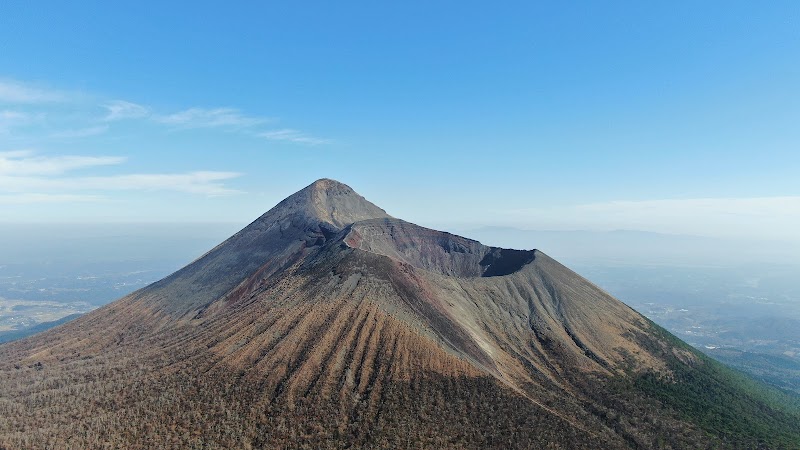Volcanic Trails and Crater Lakes: Hiking Kirishima-Kinkowan National Park
Explore the rugged volcanic peaks and shimmering crater lakes of Kirishima-Kinkowan National Park near Miyakonojo. This guide offers both vivid glimpses of the park’s fiery terrain and practical tips to prepare for a memorable hiking adventure.
Start Early to Beat the Clouds
Morning hikes increase your chances for clear views before afternoon clouds roll in, obscuring the peaks and lakes.
Wear Grippy, Sturdy Footwear
Volcanic gravel and uneven terrain demand hiking boots with solid ankle support and good traction.
Carry Ample Water
Air can be dry and hot near vents; bring at least two liters of water to stay hydrated throughout the hike.
Prepare for Variable Weather
Quick changes in weather are common; pack a lightweight rain jacket and dress in layers for temperature shifts.
Volcanic Trails and Crater Lakes: Hiking Kirishima-Kinkowan National Park
Kirishima-Kinkowan National Park, stretching over southern Kyushu near Miyakonojo, Miyazaki, demands respect and attention from every hiker who sets foot among its volcanic peaks and crater lakes. At its core, the park is a fierce entity, its mountains and calderas shaped by fire and time, daring you to explore their rugged edges and forested slopes. The Sakurajima volcanic line and Kirishima mountain range offer a dynamic landscape where breath catches at sweeping views and the earth sometimes whispers its restless nature.
The hike to Mount Karakuni—the highest peak here—covers roughly 8 kilometers out and back, with an elevation gain of about 800 meters. Expect a mix of crunchy volcanic gravel, shaded trails through ancient cedar stands, and open ridgelines with clouds brushing past like curious travelers. The path challenges your endurance without overwhelming technical skill, suitable for those with solid hiking experience but accessible enough with proper preparation.
Crater lakes like Ebino and Mi-ike sit like cool eyes beneath steaming peaks, their waters reflecting skies often strained by volcanic plumes. Along forested paths, the scent of cedar and wet moss invite pause, while occasional gusts push across high ridges, reminding hikers that here nature is fiercely itself—not tamed but negotiated with.
To prepare, sturdy hiking boots with solid grip are crucial; volcanic trails can be slippery or loose underfoot. Bringing at least two liters of water is wise, since natural sources are scarce and the air can dry out your body quickly, especially during sunny spells. Starting your hike early in the morning guarantees cooler temperatures and better chances of clear views, as afternoon clouds tend to gather swiftly. Weather can switch without warning, so layering is essential, as is carrying a lightweight rain shell.
Whether you aim to linger by thermal vents or trace the rim of a boiling crater lake, every step in Kirishima-Kinkowan feels like a conversation with an older earth, one forged in fire yet offering refuge to resilient plant and animal life. This park is a call to adventurers who respect the rugged spirit of volcanic wilderness and want straightforward, invigorating hiking that rewards with unique landscapes and practical challenges worth meeting.
Nearby Trips
All Adventures
Boat Charters
Water Activities
Adventures near Miyakonojo
Discover the unique and memorable adventures that make Miyakonojo special.
Frequently Asked Questions
How difficult is the hike to Mount Karakuni?
The hike is moderate with around 800 meters of elevation gain over 8 km round trip. It requires good physical fitness but no advanced technical skills.
Are there places to refill water along the trail?
Natural water sources are scarce and not guaranteed to be potable; hikers should carry sufficient water from the start.
Can I hike here year-round?
Yes, but weather and trail conditions vary. Winter brings snow and ice needing more equipment and experience, while summer can be hot with afternoon rain.
Is there cell reception in the park?
Cell reception is intermittent. It’s advisable to inform someone of your plan and carry a physical map or GPS.
Are guided tours available?
Local operators provide guided hikes emphasizing safety and cultural history, which can be helpful for less experienced hikers.
What wildlife might I see on the trails?
Watch for Japanese macaques, sika deer, and various birds adapted to volcanic environments.
Recommended Gear
Hiking Boots
Provides necessary ankle support and traction on loose volcanic gravel and rocky trails.
Hydration System or Water Bottles
Ensure you stay hydrated throughout the hike; water sources are limited on the trail.
Layered Clothing
Allows adjustment to rapidly changing weather and temperature fluctuations.
Lightweight Rain Jacket
Protects against sudden rain showers common in these seasons.
Local Insights
Hidden Gems
- "Kagami-Ike Crater Lake, a smaller hidden lake with crystal-clear water."
- "Hiking the ridge near Shinmoedake crater offers less crowded but stunning views of volcanic vents."
Wildlife
- "Japanese macaques often forage near trails, curious but wary."
- "The park hosts endemic alpine butterflies visible in spring and summer."
History
"Kirishima's volcanic activity has cultural importance dating back to ancient mythology, considered the birthplace of Japan’s gods."
